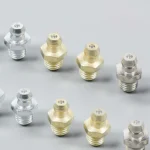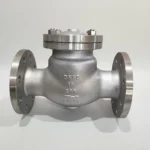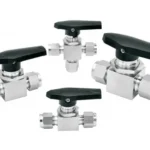많은 산업 시설에서 부정확한 압력 판독, 제어되지 않는 유체 흐름 또는 시스템 고장과 같은 문제는 종종 중요한 구성 요소인 계측기에서 비롯됩니다. 밸브. 유체 거동을 조절하는 것이 주요 역할이지만, 일상적인 유지보수 과정에서 간과하기 쉽습니다. 석유 및 가스, 발전, 화학 처리와 같이 정확성과 신뢰성에 의존하는 산업에서 계기 밸브의 기능은 안전하고 효율적인 작동을 위해 필수적입니다. 이 기사에서는 계장 밸브의 기능, 유형, 작동 원리 및 선택 기준에 대해 자세히 살펴보고 용도에 적합한 밸브를 선택하는 데 도움을 드리겠습니다.
계기 밸브는 측정 및 제어 시스템에서 유체 흐름과 압력을 제어, 분리 또는 조절하는 데 사용되는 정밀 부품입니다. 정확한 판독값을 보장하고 시스템 무결성을 유지하며 과압, 누출 및 역류로부터 장비를 보호합니다.
이제 각 기능을 자세히 살펴보고 계기 밸브가 현대 산업에서 중요한 이유를 더 잘 이해해 보겠습니다.
계측기 밸브는 어떤 용도로 사용되나요?
계기 밸브는 소구경 배관 시스템에서 유체 거동을 정밀하게 제어하고 모니터링하는 데 사용되며 일반적으로 압력 게이지, 유량 트랜스미터 또는 제어 장치와 같은 기기에 연결됩니다. 적용 분야는 다음과 같습니다:

- 흐름 조절: 실험실 및 파일럿 플랜트에서 계기 밸브를 사용하면 소규모 유체 또는 가스를 매우 정밀하게 제어할 수 있어 일관되고 신뢰할 수 있는 분석 결과를 보장합니다.
- 압력 격리: 센서 또는 트랜스미터의 유지보수 또는 교정 중에 밸브는 전체 프로세스를 종료하지 않고 시스템의 특정 부분을 격리합니다.
- 안전 환기: 고압 환경에서 계기 밸브, 특히 벤트 밸브는 시스템 유지보수 전에 갇힌 가스나 액체를 안전하게 방출할 수 있습니다.
- 역류 방지: 체크 밸브는 오염, 부정확한 판독값 또는 민감한 기기의 손상을 유발할 수 있는 역류를 방지합니다.
즉, 산업 공정을 모니터링, 측정 및 제어하는 데 사용되는 장비의 안정적인 성능을 보장합니다.
계기 밸브의 종류는 무엇인가요?
다양한 유형의 계기 밸브가 있으며, 각 밸브는 계기 회로 내에서 특정 목적을 위해 설계되었습니다. 가장 일반적인 유형은 다음과 같습니다:
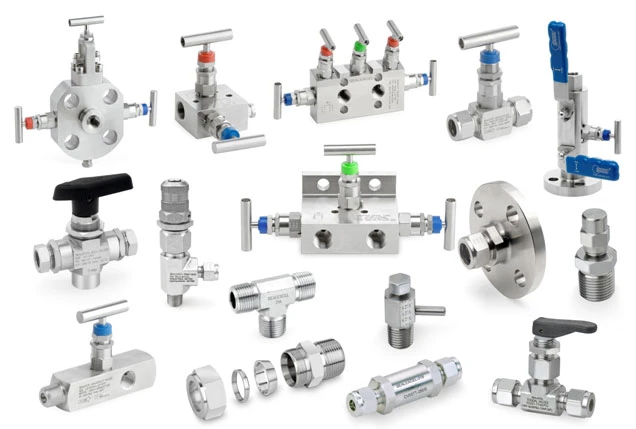
이 밸브는 정밀한 유량 제어를 위해 가늘고 가늘어지는 바늘 모양의 스템이 특징입니다. 가스 크로마토그래피 시스템이나 화학물질 주입 라인과 같이 점진적인 가압 또는 일정한 유량이 필요한 애플리케이션에 이상적입니다.
볼 밸브
볼 밸브는 구멍이 뚫린 회전하는 볼을 사용하여 유체 흐름을 시작하거나 중지합니다. 빠른 차단, 내구성 및 밀봉 성능으로 잘 알려져 있습니다. 잦은 전환이 필요한 애플리케이션에 이상적입니다.
체크 밸브
유체가 한 방향으로만 흐르도록 하는 단방향 밸브입니다. 역류를 방지하여 압력 게이지의 손상이나 프로세스 라인의 오염을 방지합니다. 체크 밸브는 안전과 신뢰성을 위해 매우 중요합니다.
계량 밸브
유체 흐름을 매우 미세하게 제어할 수 있으며 분석 시스템에서 자주 사용됩니다. 니들 밸브와 달리 정량 밸브는 자주 조정할 수 있도록 설계되었으며 높은 반복성을 제공합니다.
매니폴드 밸브
여러 밸브를 단일 블록으로 결합하여 압력 트랜스미터 및 차압 시스템에 널리 사용됩니다. 일반적으로 차단, 밸런싱 및 벤트 기능이 포함되어 있어 여러 피팅의 필요성을 줄이고 누출 지점을 최소화합니다.
두 개의 차단 메커니즘과 블리드 밸브를 하나의 구성 요소에 통합합니다. 해양 플랫폼이나 정유소와 같이 안전과 격리가 중요한 고압 애플리케이션에 필수적입니다.
올바른 밸브 유형을 선택하면 불필요한 유지보수를 줄이면서 효율성과 안전성을 향상시킬 수 있습니다.
계측기 밸브는 얼마나 정확합니까?
인스트루먼트 밸브는 엄격한 공차로 제조되며 제어 및 차단 기능 모두에서 높은 정확도를 제공합니다. 예를 들어 니들 밸브는 최소한의 변동으로 분당 몇 밀리리터까지 유량을 조절할 수 있습니다. 하이엔드 계량 밸브는 0.1% 이내의 유량 제어 정확도를 달성할 수 있습니다.
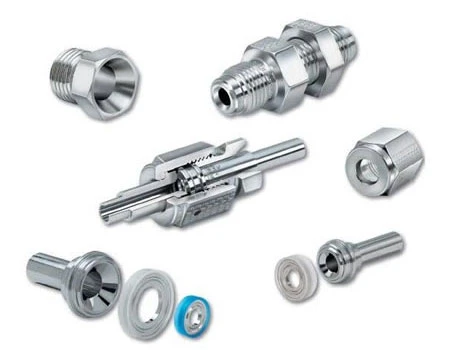
압력 트랜스미터나 유량계 판독값을 교정할 때와 같이 제어 유체가 측정 장치에 영향을 미칠 때는 정밀도가 매우 중요합니다. 밸브 성능이 좋지 않으면 데이터가 손상되고 프로세스가 지연되며 잘못된 결정을 내릴 수 있는 변수가 발생할 수 있습니다.
Walter Valve는 각 밸브가 ISO 및 CE 표준을 충족하는 압력 및 누출 테스트를 거쳐 일관된 정밀도와 성능을 제공하도록 보장합니다.
계기 밸브는 어떻게 누출을 방지합니까?
누출 없는 작동은 특히 고압, 독성 또는 폭발성 유체를 취급하는 산업에서 모든 기기 밸브의 주요 요구 사항입니다.
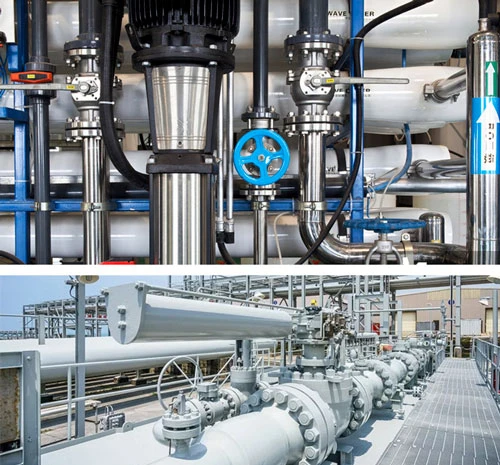
기기 밸브를 통해 누출을 방지합니다:
- 정밀 엔지니어링: 부품은 엄격한 공차(종종 미크론 이내)로 CNC 가공되어 밀봉 성능이 향상됩니다.
- 고품질 씰링 재료: 씰은 매체에 따라 부식, 온도 및 압력을 견딜 수 있도록 PTFE, PEEK, Viton 또는 금속 대 금속 접촉으로 만들어집니다.
- 나사산 또는 압축 엔드 연결: 밀폐된 공간에 밀폐형으로 설치할 수 있습니다.
- 중복 씰: DBB 또는 매니폴드 설계에서 보조 씰은 백업 역할을 하여 추가적인 보호 계층을 추가합니다.
Walter Valve는 모든 밸브를 출하 전에 무결점 공차를 보장하기 위해 정격 압력의 최대 1.5배에서 수압 및 공압 누출 테스트를 거칩니다.
계기 밸브는 어디에 주로 사용되나요?
계장 밸브는 거의 모든 공정 산업에서 사용됩니다. 다음은 다양한 분야의 일반적인 응용 분야입니다:
| 산업 | 애플리케이션 |
| 석유 및 가스 | 게이지 절연, 샘플링 라인, 트랜스미터 블록 |
| 석유화학 | 누출 없는 교정, 부식성 유체 흐름 제어 |
| 전력 생성 | 증기 및 응축수 모니터링, 급수 보호 |
| 수처리 | 여과 및 염소 처리 루프의 유량 조절 |
| 제약 | 고순도 유체 시스템, CIP/SIP 제어 루프 |
| 반도체 | 초순수 가스 취급 및 계기판 |
컴팩트한 크기와 높은 정밀도로 엄격한 측정 요구 사항이 있는 밀폐형 시스템에 이상적입니다.
프로세스 밸브와 계기 밸브의 차이점은 무엇인가요?
계장 밸브와 프로세스 밸브는 유사한 기능을 수행하지만 용도가 다릅니다:

- 계기 밸브: 소구경 시스템(¼" ~ ½")용으로 설계되어 높은 정확도, 우수한 밀봉 및 계기판과의 호환성을 제공합니다. 민감한 측정 장비를 제어, 격리 및 보호하는 데 이상적입니다.
- 프로세스 밸브: 대형 파이프라인(1인치 이상)에 사용됩니다. 예를 들어 대량의 고온 유체를 처리하는 게이트 및 버터플라이 밸브가 있습니다. 제어 정밀도는 낮지만 일반적인 유체 처리 요구 사항에 적합합니다.
이러한 차이를 이해하면 구매자가 유량과 제어 요구 사항의 불일치를 피하는 데 도움이 됩니다.
올바른 계측기 밸브는 어떻게 선택하나요?
올바른 밸브를 선택하려면 다음 매개 변수를 신중하게 평가해야 합니다:
- 중간 유형 - 유체가 부식성, 인화성, 점성 또는 불활성인가요?
- 작동 압력 및 온도 - 시스템의 최대 압력 및 온도에 맞는 밸브를 선택하세요.
- 필수 정확도 - 니들 또는 계량 밸브는 고정밀 작업에 적합합니다.
- 재료 호환성 - 316 스테인리스 스틸, 황동 또는 합금과 같은 소재는 유체의 화학적 특성과 호환되어야 합니다.
- 연결 유형 - 설치 요구 사항에 따라 NPT, 압축 피팅, 플랜지 또는 용접 끝단.
- 표준 및 인증 - ASME B16.34, ISO 9001, CE 등을 준수하는지 확인합니다.
Walter Valve의 전문가들은 3,000m² 규모의 시설에서 전 세계 고객에게 애플리케이션별 밸브 추천과 신속한 납품을 제공합니다.
빠른 배송과 재고가 중요한 이유는 무엇인가요?
다운타임이 곧 손실을 의미하는 산업에서는 밸브를 신속하게 공급할 수 있는 능력이 경쟁 우위입니다. 예를 들어, 해양 시추 작업자는 압력 모니터링 라인을 재가동하기 위해 DBB 밸브를 즉시 교체해야 할 수 있습니다. 배송이 지연되면 전체 공정이 중단되어 시간당 수만 달러의 비용이 발생할 수 있습니다.
Walter Valve는 충분한 재고와 빠른 배송 시간을 유지하여 긴급한 산업 요구사항에 대한 가동 중단 시간을 최소화합니다. 동남아시아든 북미든 신뢰할 수 있는 물류 파트너를 통해 신속하게 배송할 수 있습니다.
계기 밸브는 시스템 안전성을 어떻게 향상시킬까요?
계기 밸브는 특히 고압 또는 위험한 조건에서 시스템 안전에 중요한 역할을 합니다:
- 긴급 격리: 차단 밸브는 손상된 장비나 누수 라인으로의 유체 흐름을 신속하게 차단할 수 있습니다.
- 압력 완화: 환기 및 블리드 밸브는 센서를 과압으로부터 보호합니다.
- 오염 제어: 체크 밸브는 시스템 순도를 손상시킬 수 있는 역류를 방지합니다.
- 인체 노출 감소: 매니폴드 및 DBB를 사용하면 전체 시스템의 압력을 낮추지 않고도 유지보수가 가능합니다.
계측기 안전은 선택 사항이 아닙니다. 밸브는 첫 번째 방어선입니다.
계기 밸브의 유지보수 팁
안정적인 밸브 작동을 보장합니다:
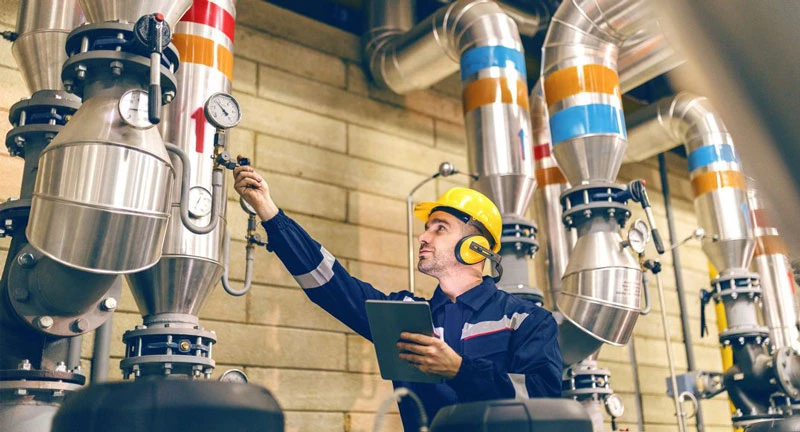
- 씰을 정기적으로 검사: 마모, 경화 또는 화학적 손상의 징후가 있는지 살펴보세요.
- 내부 청소: 특히 더럽거나 점성이 있는 유체의 경우 밸브를 정기적으로 세척하세요.
- 토크 점검: 진동이나 압력 순환으로 인한 누출을 방지하기 위해 피팅을 단단히 고정하세요.
- 손상된 부품을 즉시 교체: 씰이나 밸브 스템이 마모된 상태에서 작동하지 마십시오.
- 테스트 결과 기록: 누출 및 압력 테스트에 대한 문서를 보관하세요.
정기적인 유지보수를 통해 사소한 문제가 비용이 많이 드는 장애로 발전하는 것을 방지할 수 있습니다.
결론
계기 밸브는 단순한 유량 제어 장치가 아니라 시스템 무결성을 보호, 조절 및 유지하는 정밀 기기입니다. 유지보수를 위한 격리, 유량 측정의 정확성, 고압 환경에서의 안전 등 어떤 경우든 올바른 계기 밸브는 중요한 역할을 합니다.
Walter Valve는 전 세계 산업 구매자의 요구를 충족하는 고품질 밸브를 제조 및 수출합니다. 공장 가격, 대량 재고, 빠른 배송을 통해 귀사와 같은 고객이 위험을 줄이고 운영을 유지할 수 있도록 지원합니다.
밸브 시스템을 업그레이드할 준비가 되셨나요? 다음 연락처로 문의하세요. info@waltervalves.com 를 참조하거나 전체 계측 솔루션 제품군을 살펴보세요. 이 글이 도움이 되었다면 언제든지 공유하거나 의견을 남겨 주세요. 여러분의 피드백을 기다리겠습니다.

